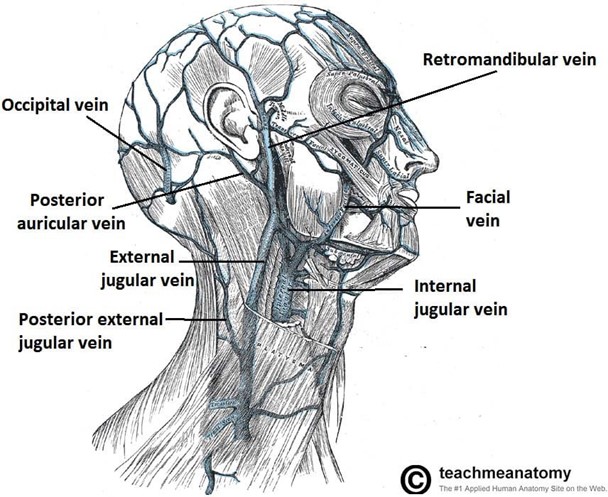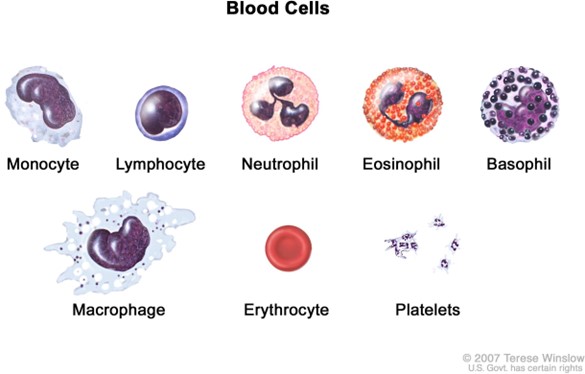The pulmonary circuit:
Sends oxygen-poor blood to the tissues.
Sends oxygen-poor blood to the heart.
Brings oxygen-rich blood from the tissues.
Sends Oxygen-poor blood to the lungs.
The Correct Answer is D
The pulmonary circuit sends oxygen-poor blood to the lungs, where it is oxygenated and returned to the heart.
This is distinguished from the systemic circuit, which sends oxygen-rich blood to the tissues and returns oxygen-poor blood to the heart.
Choice A is wrong because it confuses the pulmonary circuit with the systemic circuit. The pulmonary circuit does not send blood to the tissues but to the lungs.
Choice B is wrong because it only describes part of the pulmonary circuit.
The pulmonary circuit sends oxygen-poor blood to the heart, but only after it has been oxygenated in the lungs.
Choice C is wrong because it confuses the pulmonary circuit with the systemic circuit. The pulmonary circuit does not bring blood from the tissues but from the heart.
Nursing Test Bank
Naxlex Comprehensive Predictor Exams
Related Questions
Correct Answer is C
Explanation

This is because the external jugular vein drains blood from the face and scalp into the subclavian vein.
Some possible explanations for the other choices are:
Choice A. Superior vena cava.
This is wrong because the superior vena cava is a large vein that collects blood from the head, neck, chest, and upper limbs and returns it to the right atrium of the heart.
It does not drain blood from the face and scalp directly.
Choice B. Subclavian vein.
This is wrong because the subclavian vein is a vein that receives blood from the external jugular vein, the internal jugular vein, and the vertebral vein and joins with the internal thoracic vein to form the brachiocephalic vein.
It does not drain blood from the face and scalp directly.
Choice D. Cephalic vein.
This is wrong because the cephalic vein is a vein that runs along the lateral side of the arm from the hand to the shoulder and empties into the axillary vein.
It does not drain blood from the face and scalp at all.
Normal ranges for blood pressure vary depending on age, gender, health status, and other factors, but a general guideline is that systolic blood pressure (the pressure when the heart contracts) should be less than 120 mmHg and diastolic blood pressure (the pressure when the heart relaxes) should be less than 80 mmHg.
Correct Answer is A
Explanation
A monocyte is a type of white blood cell that is markedly larger than a red blood cell and has a large kidney-shaped nucleus.

Monocytes are involved in defending the body against infectious diseases and foreign materials.
Choice B is wrong because a basophil is a type of granular white blood cell that has a lobed nucleus and stains purple with basic dyes.
Basophils are involved in allergic reactions and inflammation.
Choice C is wrong because a neutrophil is a type of granular white blood cell that has a multilobed nucleus and stains pale pink with neutral dyes.
Neutrophils are involved in phagocytosis and killing bacteria.
Choice D is wrong because an eosinophil is a type of granular white blood cell that has a bilobed nucleus and stains red-orange with acidic dyes.
Eosinophils are involved in combating parasitic infections and allergic responses. The normal ranges of different types of blood cells are:
Red blood cells: 4.5 to 5.9 million per microliter (mcL) for males, 4.1 to 5.1 million per mcL for females
White blood cells: 4,000 to 11,000 per mcL for both males and females
Platelets: 150,000 to 450,000 per mcL for both males and females
Whether you are a student looking to ace your exams or a practicing nurse seeking to enhance your expertise , our nursing education contents will empower you with the confidence and competence to make a difference in the lives of patients and become a respected leader in the healthcare field.
Visit Naxlex, invest in your future and unlock endless possibilities with our unparalleled nursing education contents today
Report Wrong Answer on the Current Question
Do you disagree with the answer? If yes, what is your expected answer? Explain.
Kindly be descriptive with the issue you are facing.
